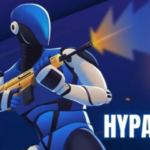Introduction: What Is “Wachappe”?
In the ever-evolving landscape of digital communication, new slang terms frequently emerge, capturing the essence of online interactions. One such term making waves in 2025 is “Wachappe”. This playful fusion of “What’s up?” and “chat” has become a ubiquitous greeting among younger internet users, symbolizing a shift towards more casual and engaging online conversations.
Origins and Evolution of “Wachappe”
The term “Wachappe” originated as a phonetic blend of the phrase “What’s up?” and the word “chat.” Its catchy and rhythmic sound contributed to its rapid adoption across various digital platforms. Unlike many slang terms, “Wachappe” was not coined by influencers or marketers but emerged organically within online communities, reflecting the grassroots nature of modern digital language evolution.
How “Wachappe” Is Used in Online Communication?
Informal Greetings
“Wachappe” serves as a casual alternative to traditional greetings like “Hello” or “Hey.” It’s commonly used to initiate conversations in a relaxed and friendly manner.
Social Media Interactions
On platforms like TikTok, Instagram, and Twitter, users incorporate “Wachappe” in captions, comments, and hashtags to convey a sense of community and informality.
Messaging Platforms
In private messages, especially among peers, “Wachappe” functions as an icebreaker or a way to check in with friends, maintaining a lighthearted tone.
Cultural Significance of “Wachappe”
Beyond its linguistic attributes, “Wachappe” embodies the cultural shift towards more authentic and personable online interactions. Its widespread use signifies a collective desire for communication that feels more human and less transactional.
Psychological Impact of “Wachappe”
Using “Wachappe” can foster a sense of belonging and approachability in digital spaces. Its informal nature helps break down barriers, making interactions feel more personal and less intimidating.
“Wachappe” in Popular Culture
The term has transcended its origins, appearing in music lyrics, memes, and even merchandise. Artists and content creators utilize “Wachappe” to resonate with younger audiences, further embedding it into the fabric of contemporary digital culture.
FAQs
Is “Wachappe” appropriate for formal communication?
No, “Wachappe” is best suited for informal interactions among friends or peers.
Can “Wachappe” be used in professional settings?
It’s advisable to avoid using “Wachappe” in professional or formal communications, as it may not convey the appropriate tone.
How has “Wachappe” influenced online culture?
“Wachappe” has contributed to a trend of more relaxed and authentic communication online, reflecting a shift towards valuing personality and connection over formality.
Conclusion
“Wachappe” exemplifies the dynamic nature of language in the digital age. Its rise underscores the importance of adaptability and creativity in communication. As online interactions continue to evolve, terms like “Wachappe” will likely play a pivotal role in shaping the future of digital discourse.





